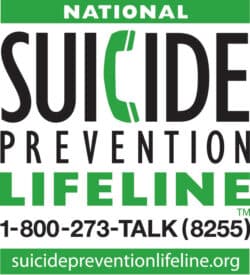Suicide Awareness Month
Know the Signs, Feel the Hope, & Connect with Someone Today
One person dies of suicide every 40 seconds. That’s about 800,000 people every year. While depression and severe mental illness is a big factor, those aren’t the only red flags. Individuals who recently went through crises or sudden, upsetting changes, people who’ve experienced trauma, and those who are isolated are at the highest risk of suicidal thoughts.
This past year has had many ups and downs, with natural disasters, the COVID-19 pandemic, and political turmoil. For many, these are triggering events and COVID-19 closures can reduce access to resources. That’s why it’s more important than ever this Suicide Awareness Month to understand the signs, connect with those around us, and offer support and resources.
There’s always hope. Studies show that suicide hotlines and ongoing support from friends or professionals significantly reduce the chance of a suicide attempt. What’s more, additional resources are always becoming available to more people across the country. For instance, just this year the FCC approved 988 as the new 3-digit suicide hotline, to be active in 2022.
There are countless success stories that show the journey to better mental health:
- Kisha Bashkiharatee celebrated three years of dancing and how it helped her grow. Watch her story here.
- Many of our PDG consumers deal with suicidal ideation. Read our consumer success stories here.
So how can you help?
Signs of suicidal thoughts include talking about suicide and already having a plan; expressing hopelessness; acting anxious, agitated, or overly aggressive; increasing use of alcohol or drugs; withdrawing; or other sudden changes in mood.
Don’t ignore the signs. Follow these tips to keep the people in your life safe:
- Ask. Research has shown that people with suicidal thoughts feel relief when someone reaches out. Be direct and compassionate, and don’t wait.
- Listen. Sometimes the hardest part is feeling alone. Listen to what your friend is saying, even if it’s hard to hear.
- Distract. Even if you can’t solve their problems, you can spend time with your friend away from danger to lessen the chances of a suicide attempt.
- Plan Long-Term. Help your friend establish places to go or people to speak with when they’re feeling low. Follow up with them afterwards and keep checking in.
For more information, visit Suicide Prevention Lifeline or the NAMI website.
National Suicide Helpline: 1-800-273-8255

